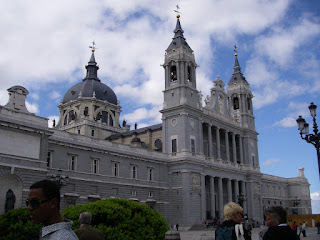There's an inevitable feeling, when you leave a special place where you have spent time away from home, that combines two contradictory emotions simultaneously: one half of your brain sends the message that you have lived there forever, the other half insists that you had just arrived yesterday. The past three weeks has been an eternity of events that have flashed by in the quickness of a ray of light. And although we are excited to see our friends and family, no one wants to leave, no one wants to let go. And really, we don't have to.
I have tried to give you all a little peek into the world we have been living in for the past three weeks. A snapshot here and a metaphor there, I wished to give you the full effect of the magic we experienced in Segovia. But the truth is, no amount of words or pictures hold the power to convey the message I am trying to send. To experience something through reading is impossible; the only true way is to live it. Still, I hope that with this blog I have been able to give you a part our journey and given my classmates and I something to reflect on and keep as a memory forever. Because there are pieces of our hearts that still haven't left Segovia and will be there always.
I have tried to give you all a little peek into the world we have been living in for the past three weeks. A snapshot here and a metaphor there, I wished to give you the full effect of the magic we experienced in Segovia. But the truth is, no amount of words or pictures hold the power to convey the message I am trying to send. To experience something through reading is impossible; the only true way is to live it. Still, I hope that with this blog I have been able to give you a part our journey and given my classmates and I something to reflect on and keep as a memory forever. Because there are pieces of our hearts that still haven't left Segovia and will be there always.


















